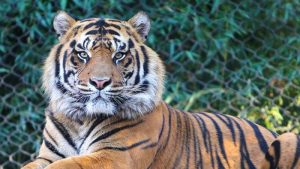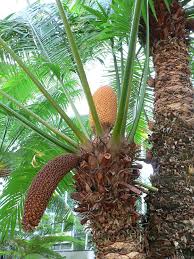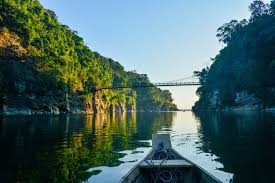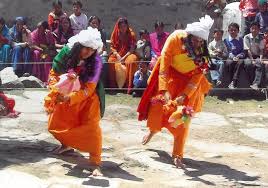Today’s Current Affairs: 5th November 2025 for UPSC IAS exams, State PSC exams, SSC CGL, State SSC, RRB, Railways, Banking Exam & IBPS, etc
Table of Contents
Bandipur Tiger Reserve:

As per the order by the Karnataka State Minister for Environment, Ecology and Forests, one late evening safari trip – each in jeep and bus – are being stopped at Bandipur Tiger Reserve (BTR), in the first phase.
- It is situated in the Mysore and Chamarajanagar revenue districts of southern Karnataka.
- It is located at the tri-junction area of the States of Karnataka, Tamil Nadu, and Kerala.
- Geographically, it is an “ecological confluence” of the Western and Eastern Ghats.
- It was once a hunting ground for the rulers of the neighbouring kingdom of Mysore.
- It is part of the larger Nilgiri Biosphere Reserve, which is recognized as a UNESCO World Heritage Site.
- BTR is surrounded by Nagarahole Tiger Reserve (Tamil Nadu) in the North West (Kabini Reservoir separates the two), Mudumalai Tiger Reserve (Tamil Nadu) in the South, Wayanad Wildlife Sanctuary (Kerala) in the South West.
- It is surrounded by River Kabini in its north and River Moyar in its south.
- Bandipur has a typical tropical climate with distinct wet and dry seasons.
- It comprises diverse vegetation of dry deciduous to tropical mixed deciduous.
- It includes rosewood, Indian kino tree, sandalwood, Indian laurel, clumping bamboo, and giant clumping bamboo, etc
- It is a shelter for the largest population of wild Asian elephants in South Asia.
- It comprises other mammals such as the Bengal tiger, gaur, sloth bear, golden jackal, dhole, and four-horned antelope, etc.
Indian Mouse Deer:

A rare Indian mouse deer was recently photographed at Tungareshwar Wildlife Sanctuary in Vasai.
- The Indian Mouse Deer, or Indian Spotted Chevrotain, is a species of even-toed ungulate belonging to the family Tragulidae.
- Scientific Name: Moschiola indica
- It is the smallest deer species found in India and is known for its elusive and shy nature.
- It is endemic to the Indian Subcontinent.
- It is mainly found in peninsular India, with some old records from Nepal.
- Sri Lanka has a separate species called the spotted chevrotain (Moschiola meminna).
- Within India, it is commonly encountered in a number of forest areas along the Western Ghats, in the Eastern Ghats up to Orissa, and in the forests of central India.
- It is small, 25-30 cm at shoulder height, and weighs from two to four kg.
- The fur color is dark brown with white underparts.
- There are four or five light rows of white spots on the back.
- Males of this species have tusk-like upper canines.
- A unique feature of this group is that instead of a four-chambered stomach like in other ruminants, they have a three-chambered stomach.
- It forages on the forest floor for fruits, roots, leaves, and herbs. It has occasionally been observed eating insects, crustaceans, and even small mammals.
- Life Span: 8 to 12 years.
- Conservation Status:
- IUCN: Least Concern
INS Savitri:

Indian Naval Ship (INS) Savitri recently arrived at Port Louis, Mauritius as part of a Long-Range Operational Deployment to the South West Indian Ocean Region.
- It is an indigenously built Offshore Patrol Vessel of the Indian Navy.
- It was built by Mazagon Dock Limited, Mumbai, and commissioned on 7 June 1990.
- It is under the Eastern Naval Command based at Visakhapatnam.
- The ship has wide-ranging operational roles, including aerial surveillance and in search & rescue roles.
- With a top speed of 15 knots (30 km/h), the ship boasts impressive features such as the 40×60 Bofors Gun and a helicopter deck capable of operating the Chetak helicopter.
- In the past, INS Savitri has been deployed for various expeditionary missions.
- It has taken part in patrols off the Maldives, Seychelles and Mauritius.
Scrub Typhus: In News

A Gulf Keralite’s impulsive decision to return home to treat a persistent fever turned out to be life-saving after he was diagnosed with scrub typhus — a potentially fatal infection that requires early treatment.
- It is an infectious disease caused by bacteria called Orientia tsutsugamushi.
- It is transmitted through infected chiggers (young mites).
- Several factors, like vector abundance, climatic factors, exposures like farming and owning domestic animals, outdoor activities and sanitation, affect its prevalence.
- This disease is more prevalent in cooler months.
- It will not spread from person to person.
- The symptoms typically include fever, headache, body ache, and sometimes a rash.
- In severe cases, the infection can lead to respiratory distress, brain and lung inflammation, kidney failure, and multi-organ failure, ultimately resulting in death.
- It is treated with doxycycline, which is most effective when administered early.
- There is no vaccine available for this disease.
- Typhus (or typhus fever) is the name used for several different types of bacterial infections spread by bug bites that cause similar symptoms, like high fever and rash.
- These symptoms can be severe and lead to serious complications if left untreated.
- There are three types of illnesses commonly called typhus:
- Epidemic Typhus: It is caused by Rickettsia prowazeki and it is spread to people through contact with infected body lice.
- Scrub Typhus: It is caused by Orientia tsutsugamushi and spread by chiggers.
- Murine Typhus: It is caused by Rickettsia typhi spread by fleas. It occurs in tropical and subtropical climates around the world.
Cycad Plant:

The All India Institute of Medical Sciences (AIIMS), Bhubaneswar has initiated a research on Cycad, over concerns that the plant contains BMAA, a potential neurotoxin.
- Cycad Plant is the palmlike woody gymnospermous plants.
- It is an ancient plant species that is believed to have coexisted with dinosaurs for over 300 million years.
- They occupy a variety of habitats. Some are native to wet rainforests while others are from semidesert climates; others grow in grasslands or seasonally dry forests.
- Tropical and subtropical latitudes in the Americas, Caribbean, sub-Saharan Africa, Madagascar, eastern India, China, Japan, southeast Asia, Oceania and Australia.
- They are woody, long-lived, unisexual plants and have main roots thickened, fleshy and often tuberous.
- They are distinguished by crowns of large pinnately compound leaves and by cones.
- Cycads in general are fire-adapted, losing leaves to the blaze but soon restoring them in a growth flush.
- They may be found growing in rich, organic soils, sand, or rock, in swampy soils or even in halophytic (salty) soils.
- Cycads are long-lived, don’t reproduce frequently, and most populations are small, putting them at risk of extinction.
- Habitat conversion through agriculture or development, illegal removal of wild plants for horticultural collection, and climate change.
Mussel:

Greek scientists have deployed thousands of mussels across the Mediterranean seafloor to help detect microplastics.
- Mussel is a bivalve mollusks belonging to the marine family Mytilidae and to the freshwater family Unionidae.
- They are most common in cool seas. Freshwater mussels known as naiads inhabit streams, lakes, and ponds over most of the world.
- Marine mussels are usually wedge-shaped or pear-shaped and range in size from about 5 to 15 centimetres.
- They may be smooth or ribbed and often have a hairy covering.
- The shells of many species are dark blue or dark greenish brown on the outside; on the inside they are often pearly.
- They attach themselves to solid objects or to one another by proteinaceous threads called byssus threads.
- They often occur in dense clusters.
- They are edible and considered nutritious, rich in protein, omega-3 fatty acids, and various vitamins and minerals.
- Freshwater mussels are used for pearl cultivation.
- These species are filter-feeding organisms that absorb a range of contaminants into their tissue, including invisible microplastics.
- They have been used globally for decades as a barometer of marine pollution.
River Umngot:

A concern has been raised that the pristine waters of River Umngot are turning murky due to massive dumping of soil and construction debris into river systems.
- River Umngot is popularly known as Dawki river which flows through the West Jaintia Hills district of Meghalaya.
- It originates from the Eastern Shillong Peak, which is located 1,800 m above sea level.
- The river builds up an innate boundary between two hills district of Meghalaya one being the Jaintia Hills and other being the Khasi hills.
- It is famous for its picturesque crystal-clear water.
- This surreal phenomenon has earned it the reputation of being the cleanest river in India.
- Umngot River is also known for the annual boat race in the month of March-April.
- It also helps in building a natural one of the international boundaries between India (Meghalaya) and Bangladesh.
- The suspension bridge over the Dawki River on NH-40 was constructed way back in 1932 and it is one of the busiest bilateral trade routes between India and Bangladesh.
Ramman Festival:

The President of India was presented with a Ramman mask at a special session of the Uttarakhand Assembly.
- It is an annual religious festival celebrated in late April in the twin villages of Saloor-Dungra, Uttarakhand, in honour of the local deity Bhumiyal Devta.
- It features complex rituals, recitations of the Ramayana, songs, and masked dances, with each caste and group playing distinct roles.
- The performances include recitations of the Rama Katha(episodes from the Ramayana), combined with masked dances of deities and local legends, blending mythic and local narrative layers.
- It is held in the courtyard of the Bhumiyal Devta temple in Saloor Dungra,
- Entire village households contribute: roles are caste-based (priests, mask-makers, drum players), funding comes from the village, and participation spans elders to youth.
- It blends narration, masked dances, ritual drama, music, and mask craft into one integrated festival.
- The festival involves theatrical performances of the Ramayana and local legends, in which people sing songs and wear masks while dancing.
- There are 18 different types of masks made of Bhojpatra, Himalayan birch, that performers wear during the event.
- Some of the instruments documented include: Dhol(a type of drum) Damau (smaller percussion drum), Manjira (small hand cymbals), Jhanjhar (larger cymbals), Bhankora (a kind of trumpet).
- In 2009, Ramman was inscribed in the list of UNESCO’s Intangible Cultural Heritage of Humanity.
Over 100 gold coins from the Vijayanagara era were unearthed:
Over 100 gold coins from the Vijayanagara era were unearthed inside an earthen pot during restoration works at a Later Chola-period Shiva temple in Kovilur, Tiruvannamalai district, Tamil Nadu.A total of 103 punch-marked gold coins of varying sizes and shapes were discovered during excavation near the sanctum sanctorum of the Kovilur Shiva temple atop the Jawadhu Hills.Officials from the Tamil Nadu State Archaeology Department (TNSAD) and Revenue Department secured the site and transferred the coins to the district treasury under the provisions of the Indian Treasure Trove Act, 1878.
The coins carry the boar emblem, a symbol of Vijayanagara royal authority, and are believed to be devotional offerings minted during the reigns of rulers such as Harihara II or Krishnadevaraya (14th–16th centuries CE).
2nd World Summit for Social Development:
Union Minister Dr. Mansukh Mandaviya represented India at the Second World Summit for Social Development (WSSD-2) held in Doha, Qatar, from 4–6 November 2025.The World Summit for Social Development (WSSD-2) is a United Nations-convened high-level global forum that brings together world leaders, international organisations, civil society, and experts to reaffirm and renew global commitments to social justice, poverty eradication, and inclusive growth in line with the 2030 Agenda for Sustainable Development.The Summit is organised under the auspices of the United Nations General Assembly (UNGA), in partnership with UN agencies.The 2025 edition was hosted by the State of Qatar, with participation from over 150 countries.
Pravasi Parichay 2025:
The Embassy of India in Riyadh concluded the third edition of Pravasi Parichay 2025 with a grand “Gita Mahotsav – A Musical”, celebrating India’s spiritual and cultural heritage.Pravasi Parichay is an annual diaspora cultural festival organized by the Embassy of India in Riyadh, showcasing India’s rich artistic, linguistic, and philosophical traditions through performances, exhibitions, and thematic events by the Indian community abroad. Organized by the Embassy of India, Riyadh, in collaboration with Indian diaspora associations and cultural institutions in Saudi Arabia.
Tri-Services Exercise (TSE-2025) “Trishul”:
India has begun Tri-Services Exercise “Trishul-2025” to strengthen integrated operations across land, air, and sea in the Sir Creek and desert sectors of Rajasthan–Gujarat, extending into the northern Arabian Sea.It is a major tri-services exercise to test joint capabilities across land, air, sea, cyber, and space, aimed at validating joint procedures, strengthening network integration, and enhancing inter-service interoperability. Coordinated by headquarters Western Naval Command (Mumbai), the exercise involves Southern Command (Army), Western Naval Command (Navy), and South Western Air Command (IAF), with support from the Coast Guard, Border Security Force, and other agencies, highlighting strong inter-agency and multi-domain integration.
Amul Ranks as the World’s Top Cooperative in GDP Per Capita:
The Gujarat Cooperative Milk Marketing Federation (GCMMF), which markets dairy products under the Amul brand, has been ranked the No. 1 cooperative in the world based on GDP per capita performance, according to the International Cooperative Alliance (ICA) World Cooperative Monitor 2025.Amul’s success stems from its three-tier cooperative structure, empowering 36 lakh milk producers through 18,600 village dairy cooperatives, promoting inclusive growth, social equity, and rural development across India.
Indo-Pacific Regional Dialogue 2025:
The Indo‑Pacific Regional Dialogue 2025 (IPRD 2025), the Indian Navy’s annual apex-level strategic conference, concluded in New Delhi on 30th October 2025.The seventh edition, themed “Promoting Holistic Maritime Security and Growth: Regional Capacity-Building and Capability-Enhancement,” brought together representatives from over thirty Indo-Pacific and partner nations to discuss cooperative strategies for regional maritime stability and development.Over 95% of India’s trade by volume passes through the Indian Ocean, making the region essential to India’s sovereignty and security.
Guru Nanak Jayanti 2025:
Guru Nanak Jayanti, also known as Gurpurab, is celebrated on 5th November 2025, marking the 556th birth anniversary of Guru Nanak Dev (1469–1539). The day commemorates the founder of Sikhism, celebrating his message of equality, and compassion.It is celebrated on the day of Kartik Poornima, which is the fifteenth lunar day in the month of Kartik according to the Hindu calendar, and usually falls in the month of November by the Gregorian calendar. Guru Nanak Dev Ji was born in 1469 at Talwandi (now Nankana Sahib, Pakistan) and attained spiritual enlightenment in 1496 at Sultanpur Lodhi.As the founder of Sikhism and the first of the ten Sikh Gurus, he rejected caste discrimination, ritualism, and idol worship, advocating devotion to one formless God.He passed away in 1539, after appointing Guru Angad as his successor.
Rowmari-Donduwa Wetland Complex:
There is a demand for the inclusion of the Rowmari–Donduwa Wetland Complex in Assam as a Ramsar Site, recognizing its remarkable biodiversity and ecological significance.Rowmari–Donduwa Wetland Complex is located within the Laokhowa Wildlife Sanctuary (WLS), a part of the Kaziranga Tiger Reserve in Assam. It is an interconnected floodplain–marsh system spanning about 2.5 to 3 square kilometres.It hosts a higher diversity of bird species compared to the two existing Ramsar sites in Northeast India — Deepor Beel (Assam) and Loktak Lake (Manipur). The 2025 Kaziranga Wetland Bird Census recorded 47,000+ birds from 75–88 species, including Knob-billed Duck, Black-necked Stork, and Ferruginous Pochard. The Rowmari–Donduwa Wetland Complex, with its rich birdlife, diverse habitats, and strong ecological links, is an ideal candidate for Ramsar Site designation.
India’s Data Centre Capacity Set to Reach 9 GW by 2032:
India’s data centre industry is projected to expand significantly, with capacity expected to increase from 1.2 GW in 2025 to 9 GW by 2032, registering a compound annual growth rate (CAGR) of 17%. Data centres are specialised facilities that store, manage, and process large volumes of electronic data.
They house critical Information Technology (IT) infrastructure, including servers, storage devices, networking equipment, and systems for cooling, power supply, and security. These centres are designed to offer reliable, scalable, and secure environments for managing data essential to modern digital operations-ranging from cloud computing to artificial intelligence applications.Despite producing 20% of the world’s data, India currently holds only 3% of global data centre capacity, highlighting vast potential for expansion.India currently hosts around 150 data centres, with major players such as Amazon Web Services (AWS), Microsoft Azure, Google Cloud, etc. leading the market. Mumbai accounts for over 50% of India’s data centre, and emerging hubs include Ahmedabad, Pune, and Visakhapatnam (Vizag).
Heavy metals are polluting the Cauvery River and its fish:
Heavy metals are polluting the Cauvery River and its fish, researchers from Tamil Nadu have reported.The term ‘heavy metal’ refers to any metallic chemical element that has a relatively high density and is toxic or poisonous at low concentrations. Examples of heavy metals include mercury (Hg), cadmium (Cd), arsenic (As), chromium (Cr), thallium (Tl), and lead (Pb). Heavy metals are natural components of the Earth’s crust. They cannot be degraded or destroyed. To a small extent they enter our bodies via food, drinking water, and air. As trace elements, some heavy metals (e.g. copper, selenium, and zinc) are essential to maintain the metabolism of the human body. However, at higher concentrations they can lead to poisoning. Heavy metal poisoning could result, for instance, from drinking-water contamination (e.g. lead pipes), high ambient air concentrations near emission sources, or intake via the food chain.




